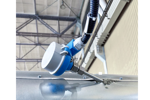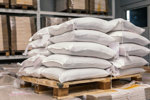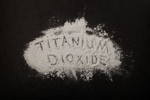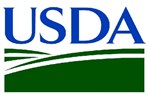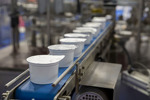FOOD PACKAGING EQUIPMENT CASE STUDIES
-
Washington Fruit & Produce Enhances Food Traceability With Key Distribution Center Upgrades
For Washington Fruit & Produce, Co., one of Washington state’s largest shippers of apples, maintaining the most effective technology possible for distribution center (DC) operations is a constant requirement.
-
Case Study: A Breakthrough In Snack-Packing Efficiency: Red Mill Welcomes The Ishida FPS
By automating the packing of cases, using two Ishida Flexible Packing Systems (FPS), a major snack food company can now run an entire production and packing unit, from production and flavouring through to case-packed, palletised product, with a 60% reduction in labour costs.By Ishida Europe
-
Quaker Steak & Lube Ensures Food Quality And Safety With Avery Dennison's FreshMarx Automated Freshness Labeling Solution
Although the busy kitchen of Quaker Steak & Lube in Middleton, WI is always hopping with up to 12 employees preparing and labeling enough food to accommodate its weekly 5,000 to 6,000 guests, Proprietor, Scott Acker, never worries about the freshness of the food he serves. By Avery Dennison Printer Systems Division
FOOD PACKAGING EQUIPMENT WHITE PAPERS & ARTICLES
-
Reducing Complexity In Data Center Cooling Temperature Measurements
Endress+Hauser’s iTHERM SurfaceLine TM611 non-invasive temperature measurement performs comparably to traditional industrial thermometers with an elegant mechanical innovation.
-
Advanced Product Inspection Technologies In The Food Industry
Learn more about these advanced product inspection technologies like metal detectors, X-ray systems, and checkweighers that are revolutionizing food safety and compliance.
-
Maximizing Blowers, Bakeries, And Bulk Materials
It is all too common for bakeries to end up with blowers for their pneumatic lines that are not the right size. Explore how to avoid long-term problems and costs associated with an under-sized system.
-
The EU's Ban On TiO2 In Food May Impact Pharma. Here's What You Should Know.
Titanium dioxide (TiO2) is used as a food additive and OSD pharmaceutical excipient. In 2020, the European Food Safety Authority noted data gaps regarding particle size, which can affect its toxicological properties, so the European Commission banned it as a food additive. Here's how this could impact pharma.
-
Implications Of The Upcoming USDA Strengthening Organic Enforcement Rule
The new Strengthening Organic Enforcement (SOE) Rule, which went into effect in March 2023, seeks to reduce fraud in the organic marketplace, improve the USDA’s enforcement protocols, and enhance oversight of organic producers, handlers, and certifiers. Though the rule will require action for many businesses and organizations, these changes will ultimately create a more unified, trusted, and transparent organic supply chain.
-
Principles Of Due Diligence For Food Safety And Quality Control
Explore the core principles of due diligence, legal requirements and standards for food safety, and ways to reduce the risk of product recalls.
FOOD PACKAGING EQUIPMENT NEWS
-
Chelsea Milling Moving Ahead On Expansion Efforts12/15/2015
Chelsea Milling Co., maker of Jiffy Mix baking mixes, is moving ahead with plans to spend $35 million as part of an expansion that includes the addition of a new mixing tower, according to an article in The Ann Arbor News.
- Frozen Food Packaging Market In The Us 2015-2019 - Key Vendors Are Graphic Packaging, Printpack, Sealed Air & Westrock
- Flexible Packaging Market To Be Driven By Rising Demand For Flexible Food Packaging Across The World
- Global Baby Food Packaging Market 2015 – Industry Size, Growth, Analysis, Forecast
- Global Pet Food Packaging Market 2016-2020 - Market Expand CAGR Of 8 Percent By 2019
- Ulma Packaging's Equipment For Poultry Wrapping

